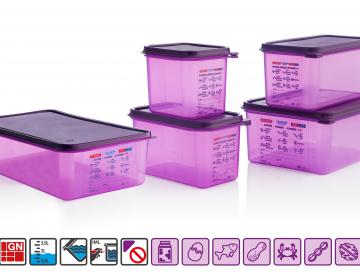
Allergen management
As a result of the entry into force of the EU 1169/2011 Regulation, this article is going to look at the most relevant aspects in the control of allergens or foods that may cause food intolerance
1. RAW SUPPLIES:
– Control of suppliers:
A supplier plan must include the systematic control of allergens. In packaged products this information must be specified on the label. In the case of non-packaged products, suppliers delivering to industrial caterers must provide all the information on the foodstuff so that the catering client can, in turn, pass it on to the end consumer. This information should include:
- The full list of the ingredients of the raw material in question and its origin.
- How distribution and storage has been carried out and if there is the possibility of any cross-contamination with allergenic ingredients.
- If the conditions of transportation to your establishment have been controlled and it has been checked that there has not been any cross-contamination either in the material or the containers or packaging that it is supplied in.
– Reception of raw supplies
All raw materials received must be properly identified and checked for any intentionally added allergens or by-products (additives, aromas, or carriers or solvents for additives or aromas, technological adjuvants), or any possible cross-contamination at the supplier’s facilities or during transportation.
– Storage of raw supplies
It is recommended that ingredients are stored in closed containers, correctly differentiated from each other, to avoid any possible cross-contamination, and properly labelled.
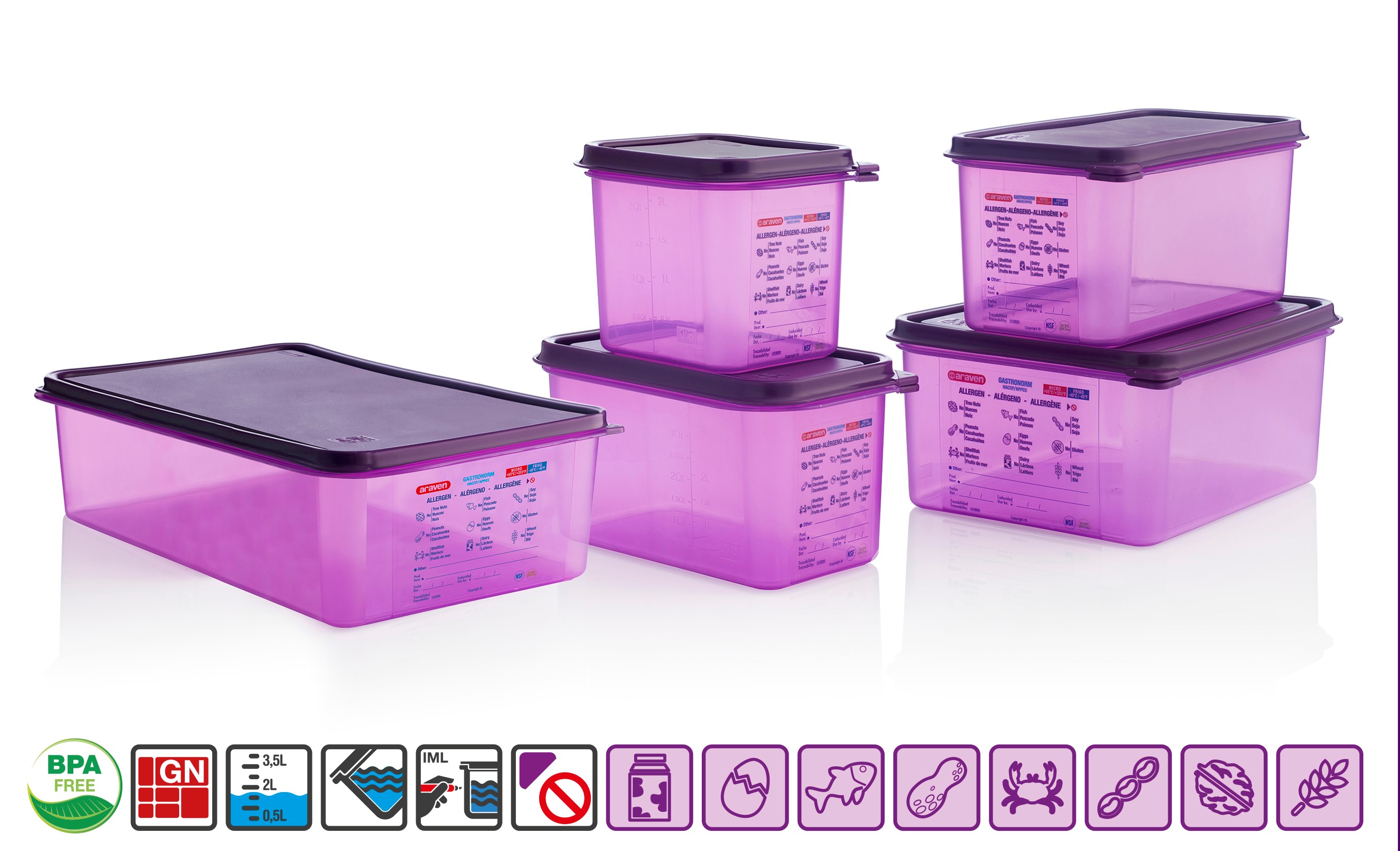
Araven has developed a range of purple airtight containers to store menus specially prepared for people with food intolerances. This allows quick identification of special menus avoiding any mix-ups. Purple is the colour that identifies this group of people, which also allows supplies to be rapidly identified in cold chambers.
2. RECIPE FOR THE DIFFERENT MEALS PREPARED:
The first step is to plan which dishes are going to be made and the ingredients that are going to be used. An information sheet should be prepared detailing all the ingredients of the dish in question (alternative ingredients that can be used, compound ingredients that may contain an allergen).
3. FACILITIES, EQUIPMENT AND PROCESSES:
When preparation begins it is essential to avoid any type of CROSS CONTAMINATION since a very small amount of a certain ingredient could be fatal for a person allergic to it.
Therefore, as a general measure, it is important to establish the order in which the menu will be prepared: it is recommended to prepare meals for allergy sufferers first, in order to minimise the risk of cross contamination.
Before preparation:
- Work surfaces, utensils and work clothes must be perfectly clean.
- If possible, use specific utensils (for example, in different colours) to avoid the risk of cross contamination. If this is not always possible, utensils should always be cleaned thoroughly before reuse.
- Check all the ingredients on the recipe card that have been prepared.
- Carefully check the labels of the ingredients to ensure that they are the ones you want to use in your recipe and make sure whether or not they contain allergens.

During preparation:
- Avoid touching other foods while preparing a specific dish with specific ingredients.
- Use new oil to fry and cook each type of food in a deep fryer or frying pan.
- Clean hot plates thoroughly so as not to mix foods
After preparation:
- Once the dishes have been prepared, keep them separate and clearly identified.
- If a mistake has been made in preparing a ready-to-serve dish, it is not enough to remove the allergenic ingredient since there may still be remains of it that are not visible, and which could cause irreparable harm to a person with an allergy. Thus, we have to assume that the allergen is present and report it.
- Wash hands as many times as necessary to avoid foods being contaminated by others when serving.
4. CLEANING:
Since exposure to very small quantities of an allergen can be enough to trigger a serious allergic reaction, cleaning procedures in this type of processes are of vital importance. It is important to follow certain guidelines on actions to improve effectiveness:
- Wet cleaning systems are preferable to dry ones.
- Air or water pressure cleaning systems that may disperse allergens should not be used.
5. TRAINING:
Staff must receive specific training on food allergens and the consequences that their ingestion has on anyone suffering from an allergy.
6. LABELLING:
Caterers must inform, preferably in writing, about the possible allergens that their dishes contain.
The label provides consumers with information on the product and its composition must indicate all the ingredients and allergen derivatives it contains, as established by the Standard.
Araven airtight containers, specially designed for allergens, have an in-mould traceability label that indicates foods that the EU specifies as a risk of allergic contamination, this way foodservice professionals can mark any food they exclude from preparations. This tool helps with identification and to avoid mistakes or mix ups when serving a menu.
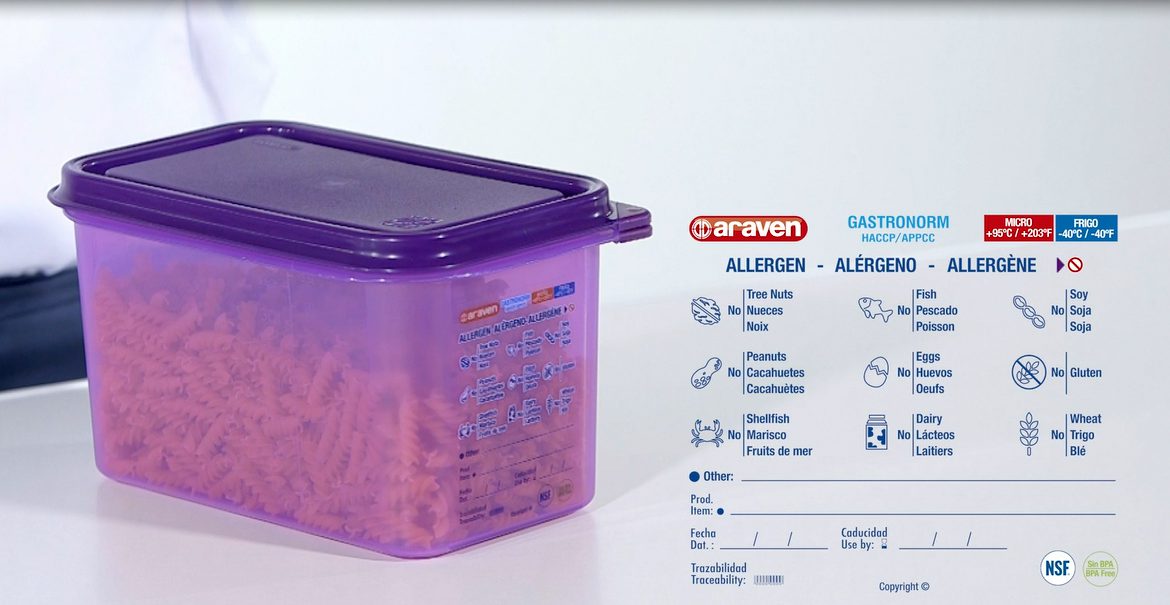
It may interest you

Food management in the professional kitchen
In professional kitchens receiving and keeping raw supplies in optimal conditions is a fundamental part of food management.
Read more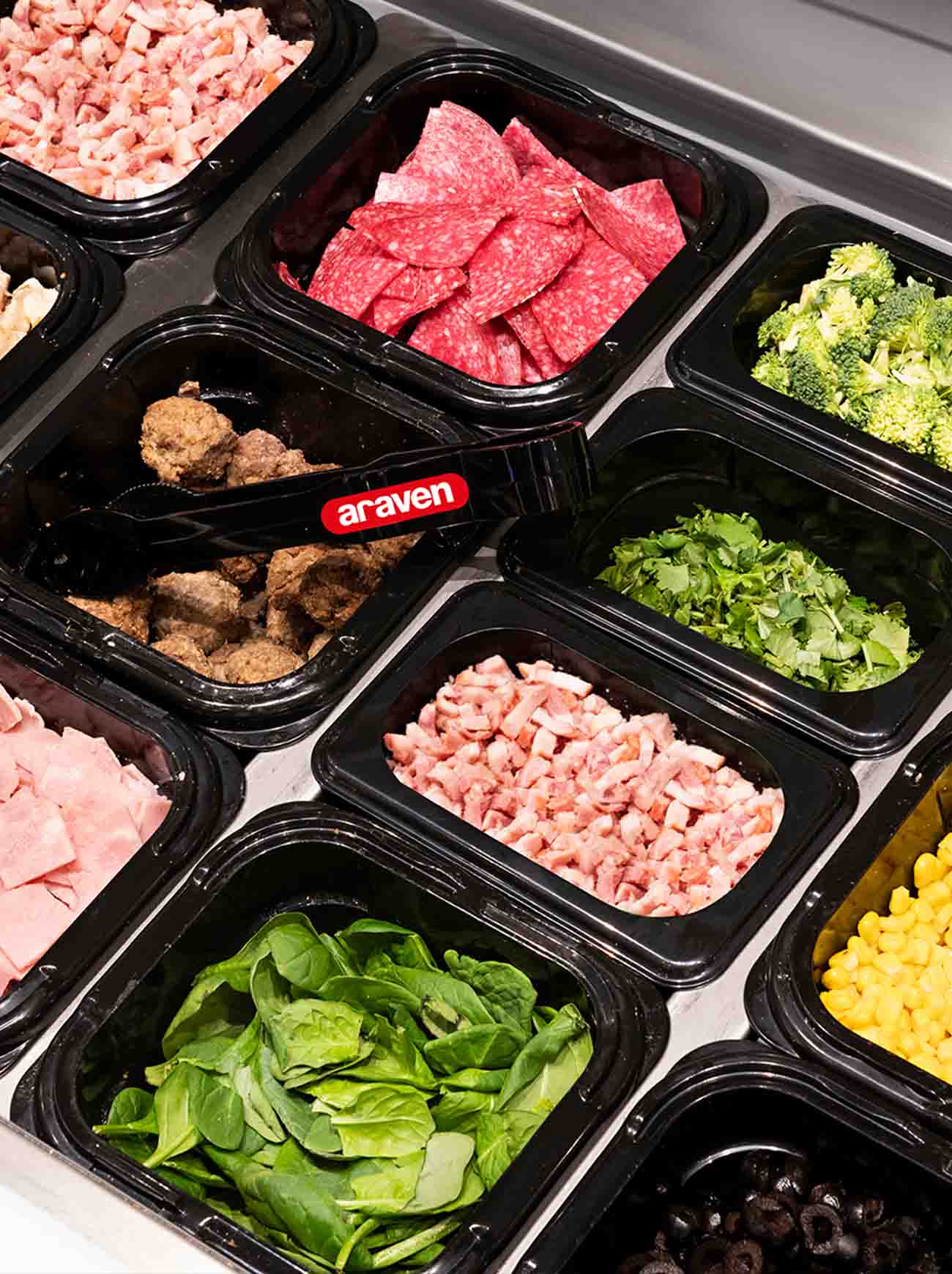
Food safety
Food safety does not only depend on the state of the food and the type of process that it is subjected to. The materials that food comes into contact with are also very important. Araven products comply and help to comply with all the required regulations regarding food hygiene. We can guarantee food safety in … Continued
Read more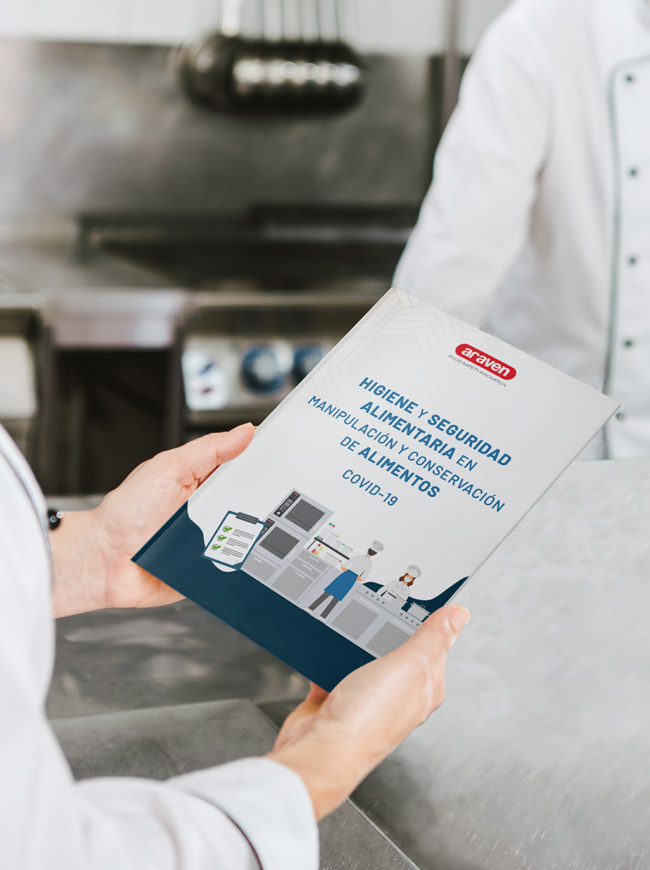
Guides of products by type of food
Each type of food requires specific storage and handling conditions. Having the right equipment at hand will help you to achieve a dual objective: to ensure optimal quality in terms of hygiene and health requirements and to reduce waste due to food spoilage.
Read more